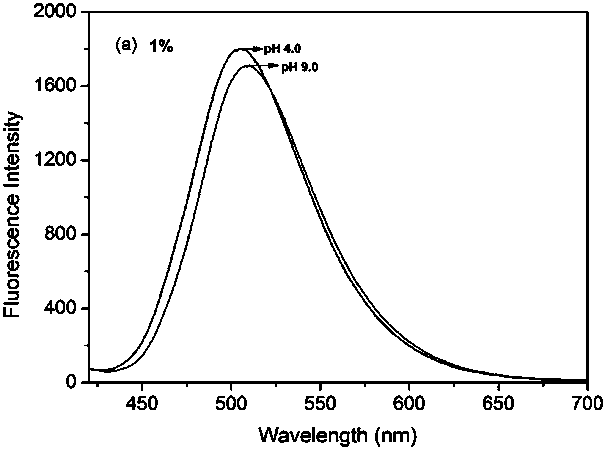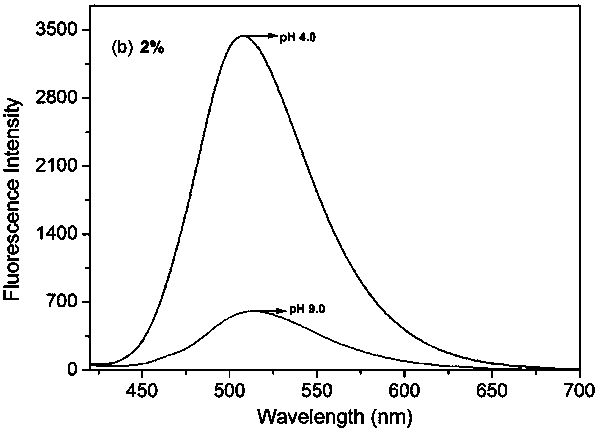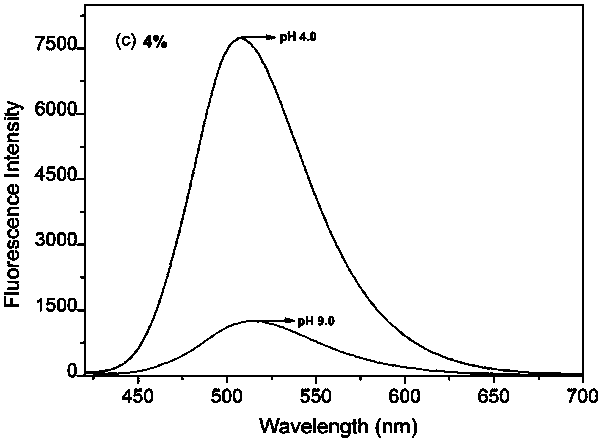Polymer nanofluorescent probe for detecting pH value in cell as well as preparation method and application of polymer nanofluorescent probe
A nano-fluorescent probe and polymer technology, applied in the field of analytical chemistry, can solve the problems of limited application, poor solubility, etc., and achieve the effect of good photostability
- Summary
- Abstract
- Description
- Claims
- Application Information
AI Technical Summary
Problems solved by technology
Method used
Image
Examples
Embodiment
[0044] A polymer nanofluorescent probe for detecting intracellular pH value. The nanofluorescent probe is based on the compound 1 6-(4-dodecylpiperazine)-2-(2-morpholinoethyl)-1H- Benzo[de]-isoquinoline-1,3(2H)-dione is a light-emitting compound loaded on the amphiphilic block polymer nanomaterial polystyrene-b-polyacrylate tert-butyl ester (PS-b-PtBA ), the structural formula of the compound 1 is as follows:
[0045] .
[0046] Further, the amphiphilic block polymer nanomaterial is polystyrene-b-polyacrylate tert-butyl PS-b-PtBA, and the segment n of the amphiphilic block polymer nanomaterial is between 30-40 Between, m is between 20-35, and its structural formula is as follows:
[0047] .
[0048] Compound 1 adopts the following synthetic route:
[0049]
[0050] 1) Synthesis of compound 3 (6-bromo-2-(2-morpholinoethyl)-1H-benzo[de]-isoquinoline-1,3(2H)-dione):
[0051] Weigh 4-bromo-1, 8-naphthalene anhydride (0.554 g, 2 mmol) into a 50 mL three-neck reaction fl...
PUM
| Property | Measurement | Unit |
|---|---|---|
| distribution coefficient | aaaaa | aaaaa |
Abstract
Description
Claims
Application Information
 Login to View More
Login to View More - R&D
- Intellectual Property
- Life Sciences
- Materials
- Tech Scout
- Unparalleled Data Quality
- Higher Quality Content
- 60% Fewer Hallucinations
Browse by: Latest US Patents, China's latest patents, Technical Efficacy Thesaurus, Application Domain, Technology Topic, Popular Technical Reports.
© 2025 PatSnap. All rights reserved.Legal|Privacy policy|Modern Slavery Act Transparency Statement|Sitemap|About US| Contact US: help@patsnap.com



